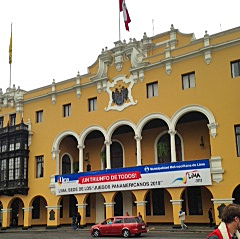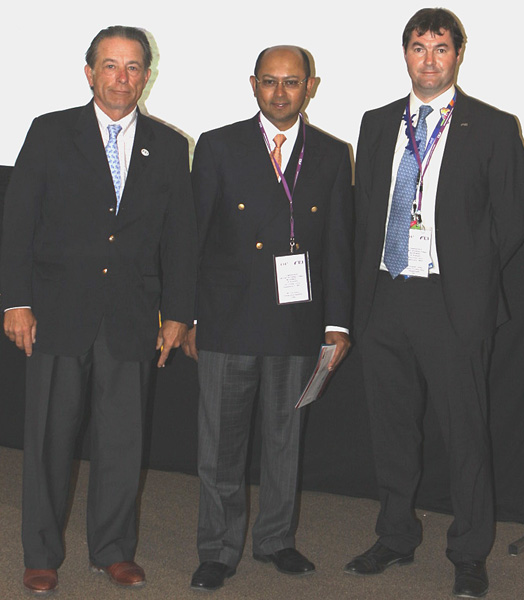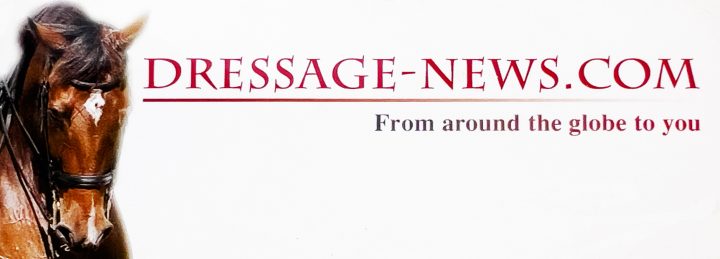2019 Pan American Games to Lima, Peru,Problems with Horse Travel to Recent Bolivarians
11 years ago StraightArrow Comments Off on 2019 Pan American Games to Lima, Peru,Problems with Horse Travel to Recent Bolivarians

Dec. 10, 2013
By KENNETH J. BRADDICK
Lima, Peru was selected to host the 2019 Pan American Games just weeks before problems transporting horses to Lima from the United States led to the elimination of Venezuela as a team in the dressage Nations Cup at the Bolivarian Games.
Transport of horses, requirements by the Peruvian government animal import agency that were reported to have been inconsistent and changed frequently, poor footing, recording of incorrect dressage scores and complaints involving eventing and jumping were among issues that plagued last month’s Bolivarians.
The issues took on greater significance with selection of Lima to host the Pan Ams, the largest multisport championship after only the Olympics that have also traditionally been a qualifying competition for the Olympics for dressage, eventing and jumping.
The U.S. Department of Agriculture along with Peru’s SENASA were at the center of the issue in which two Venezuelan team horses based in Florida were removed from an aircraft at Miami International Airport that was scheduled to fly to Lima after more than two weeks in quarantine. Days later, one horse made it to Lima in time for the veterinary check while the other was pulled out by the owner so Venezuela did not have the minimum of three combinations for the Nations Cup.
Both the International Equestrian Federation (FEI) and the USDA have pledged to help streamline transportation of high performance horses between nations despite national sensitivities and animal export and import requirements, which in many cases were devised decades ago before the growth of international horse sports. SENASA did not respond to emails.
The problems for dressage, eventing and jumping that were among 50 sports on the calendar began before the start of the Games of Colombia, Venezuela, Ecuador, Chile, Peru, Guatemala, Dominican Republic, Paraguay, Bolivia, El Salvador and Panama when at least one rider was reported to have refused permission to inspect the competition site in advance.
The problems came to a head when two horses for the Venezuelan team, including Darius owned by Alida Coburn, underwent 16 days of quarantine in Wellington, Florida then went to Miami and were loaded aboard the aircraft for Lima.
Both horses were ordered removed after it appeared that authorization of the veterinarian who signed health certificates had expired, though apparently was valid at the time they were signed. The horses were ordered to go through another round of medical tests. Pleas to SENASA to resolve veterinary issues went unaswered for three days.
One horse was eventually cleared and made it to Lima in time for the veterinary inspection though by that time the horses had been unridden for about three weeks and in Miami fed only hay.
A sarcoid on Darius led the USDA to attempt to contact SENASA to pre-authorize importation for the Games. When there was no response, the USDA veterinarian recommended not shipping the horse so it did not go through the stress of travel and then be banned from entering Peru.
“As my horse’s wellbeing is my top priority,” Alida told dressage-news.com, “I decided to stop insisting since it meant to keep him locked up in a stall in the area of Miami quarantine, Florida for who knows how long, without spotting any progress to reach any logical agreement to benefit not only myself as a rider but for the horse in this case.
“This confinement has been detrimental to the equine athlete , who was not able to exercise not being at his best for the competition trying to comply with the bureaucratic protocol that in my opinion is far from being optimal for internationally competing horses’s welfare
“It is of the utmost importance that in order to keep the international sport alive in this part of the world, protocols and agreements are reached among countries so our horses can take travel and compete.”
The USDA said it could not comment on specific cases but provided dressage-news.com with a copy of the agreement with Peru covering shipping of horses for the Bolivarians.
Requirements for export were set by Peru and horses had to be certified according to their rules.
“An accredited veterinarian performs the required inspections, tests, and treatments,” a USDA spokesperson told dressage-news.com. “The health certificate is endorsed by a USDA APHIS (Animal and Plant Health Inspection Service) veterinary medical officer. If a horse cannot be completely certified as required by the destination country, then the horse cannot be exported unless a waiver is granted by the government of the destination country. If the destination country does not grant a waiver, then the horse cannot be exported.”

The USDA said it is involved in the work of the FEI and International Animal Health Organization (OIE) to facilitate international movement of high level competition horses, beginning with the initial meeting that was held during the 2011 Pan Am Games in Guadalajara, Mexico.
Graeme Cooke, FEI Veterinary Director, told dressage-news.com: “The process of bringing about change in long standing national import polices for horses is slow, and often requires changes in longstanding national legislation.”
As a result of the 2011 Guadalajara meeting the OIE General Assembly voted to commission an official solution that would be brought before them in 2014.
“This is excellent progress in a complex area and the FEI and National Federations can be more optimistic about significant changes in the way high performance horse might be moved than at any time previously,” he said. “Lessons learnt from major events such as the Bolivarian Games will naturally be part of ensuring the correct way forward is chosen to reduce problems in the future.”
Questions have been raised over the Olympics in Rio de Janeiro in 2016, the first time the Games have been held in South America and following some issues during the Pan Ams in the same city in 2007.
The FEI, Graeme Cooke said, has had several meetings with the lead Brazilian authorities and “a series of measures will be in place in order for the Rio 2016 Olympic Games to be protected from disease situations that have in the past disrupted the movement of horses to and from Brazil for major events. The FEI is also working with several key authorities around the world so that they are aware of those measures well in advance.”
Transport of horses from Europe and the Americas to recent dressage and jumping events in Brazil, as well as the recent jumping Nations Cup in Porto Alegro, have gone smoothly, according to national federations and shipping companies.

